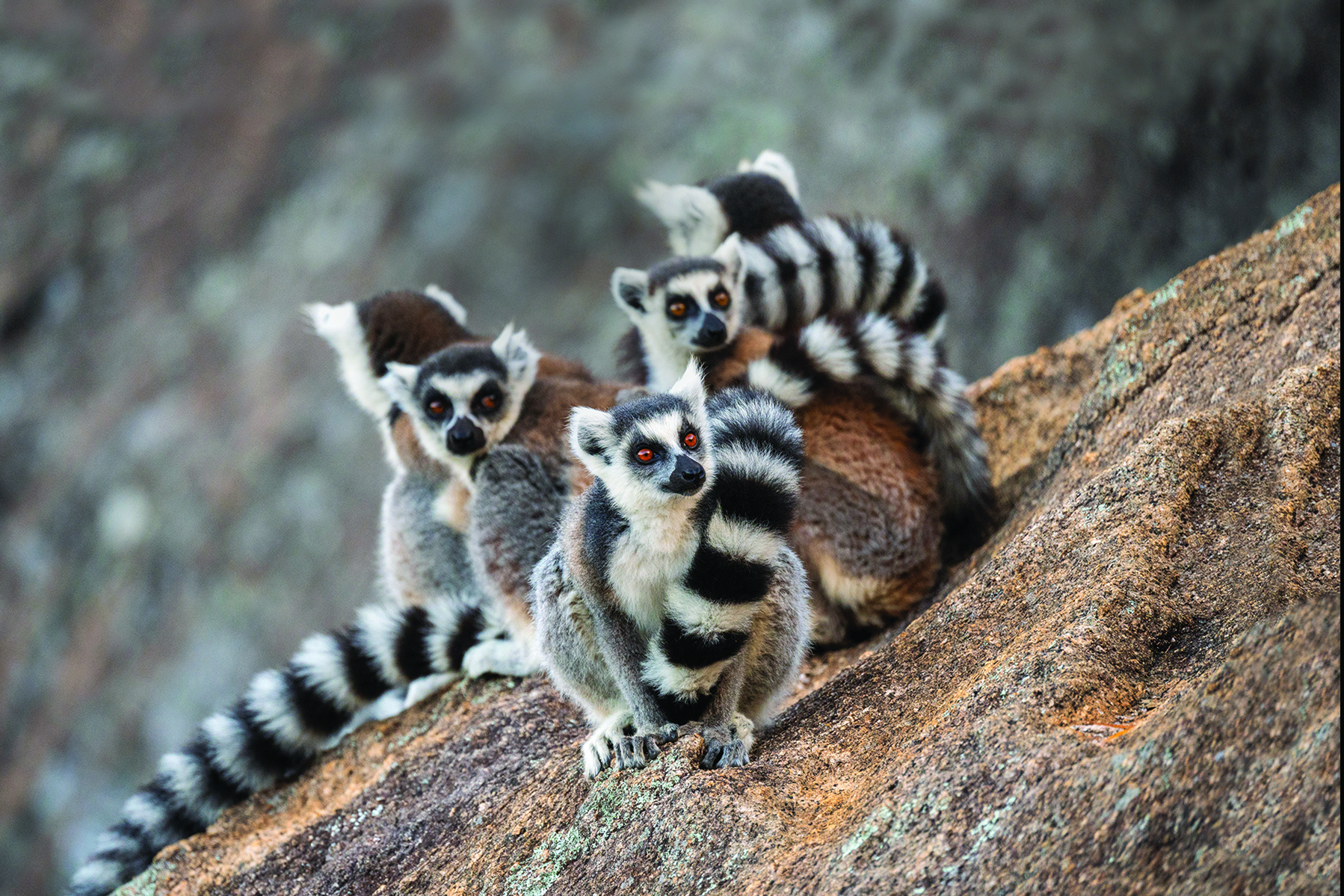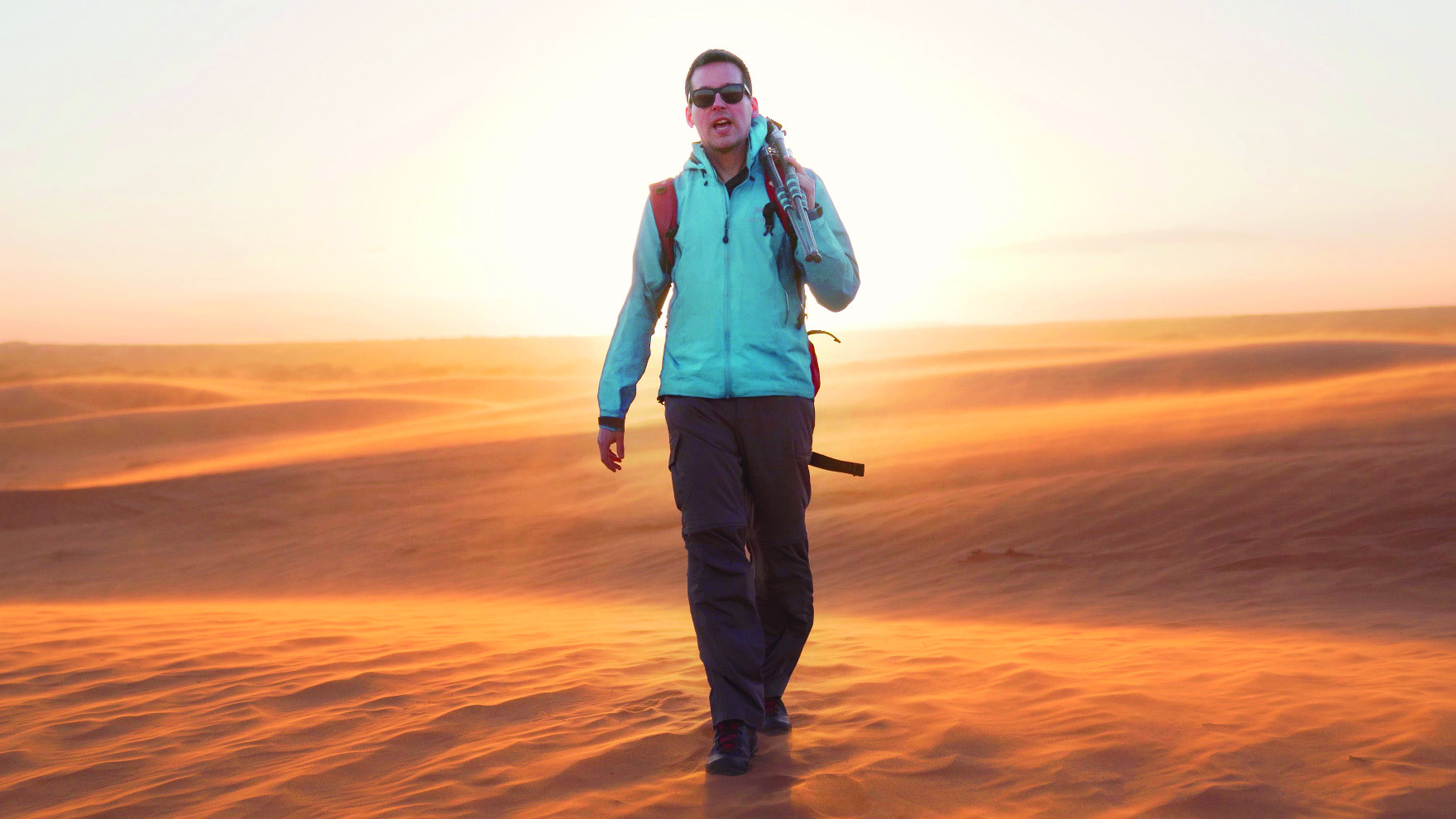
5 minute read
MADAGASCAR MEANDERINGS WITH IAN PLANT
Ian Plant photographs the unique wildlife and landscapes of the Red Island with his Tamron 35-150mm F/2-2.8 and 150-500mm VC zooms.
When Ian Plant was planning his trip last summer to Madagascar, an island nation in the Indian Ocean about 250 miles off the coast of Mozambique, he knew he’d need fast, sharp lenses that offered him the versatility to capture local wildlife and a wide variety of landscapes—from lush rainforests and imposing “tsingy” rock formations to the country’s iconic baobab trees. “Madagascar has species that are found nowhere else on Earth, so I definitely wanted to focus on the creatures that make Madagascar unique, as well as their habitats,” he says.
Ian’s chosen companions during his four-week wandering: the Tamron 35150mm F/2-2.8 Di III VXD all-in-one zoom and the 150-500mm Di III VC VXD, both for Sony mirrorless camera systems. “The 150-500mm is a terrific general-purpose wildlife lens that offered me the versatility I was looking for,” he says. “Meanwhile, the 35-150mm was a perfect complement to that lens for wildlife. Many of the animals there aren’t afraid of people, so I was able to get a little closer to take their pictures. Plus, that lens was perfect for nighttime photography. Many of the species are nocturnal, so we’d photograph them during nighttime walks. Having a fast F/2-2.8 lens was critical in those situations. The 35-150 was also my go-to lens for landscapes, especially when I wanted to zoom in and pluck out a discrete portion of the scene for a more intimate composition.”

Tamron 150-500mm | Focal length: 500mm Exposure: F/6.7, 1/250 sec., ISO 2000
Among the most famous creatures on Madagascar are its ring-tailed lemurs, which are endemic to the island. During Ian’s visit to the Anja Community Reserve, an environmental and cultural preservation site in the country’s south, the lemurs were out in full force. “You head into the reserve with a guide, and before you’re even a few hundred feet in, you’re surrounded by them,” he says. “I was able to take many pictures, including this one with the 150-500. They’re pretty comical animals that sound a lot like cats, even though they’re primates like humans, though at the opposite end of the primate scale from us.”
Using his Tamron zooms allowed Ian to capture even more intimate photos with the resident wildlife.

Tamron 150-500mm | Focal length: 199mm Exposure: F/11, 1/1000 sec., ISO 1000
“The smaller lizards in Madagascar are all very comfortable around humans, but it still helps to have the reach of a longer lens like the 150-500,” he says. “I used that lens to photograph the chameleon you see here dining on a cricket. It was somewhat high up on a tree branch, so I needed to zoom in to get a decent photo.”

Tamron 150-500mm | Focal length: 500mm Exposure: F/6.7, 1/500 sec., ISO 400
The owl Ian photographed is a nocturnal species that seeks out hiding spots during the day. “I’d hoped it would open its eyes for my photo—and it did, after about an hour, but I actually preferred this image with its eyes closed,” he says. “It seemed to tell more of a story, like it was resting after a long night of hunting. I shot this image a bit wider so I could include some of the blue sky in the photo for color contrast.”

Tamron 35-150mm | Focal length: 150mm Exposure: F/5.6, 1/125 sec., ISO 1000
The 35-150mm and its maximum F/2-2.8 aperture allowed Ian to capture an O’Shaughnessy’s chameleon during an evening stroll. “When you see one of these nighttime critters, you have to take the photo as quickly as possible when the guide shines their flashlight on it,” he says. “The chameleon changes color in response to light, so when the flashlight beam first hits it, you’ll see all of these brilliant colors. Eventually, as it adjusts to the light over several minutes, it turns a dull brown or gray.”

Tamron 150-500mm | Focal length: 500mm Exposure: F/6.7, 1/400 sec., ISO 100
Madagascar wildlife wasn’t the only subject in front of Ian’s camera during his visit. The island nation’s locals also offered him the opportunity to showcase more of the flavor of Madagascar. Although he spent only one day visiting the island’s coast, he still found the time to squeeze in a photo or two of resident sailors. “I loved the colorful traditional boats that they use,” he says. “The yellow sail in this photo contrasted so nicely with the deep blue waters. We were driving when I spotted this boat, so I asked our guide to stop so I could take a picture. The 150-500mm zoom came in very handy here, because the boat was quite distant.”

Tamron 35-150mm | Focal length: 132mm Exposure: F/9, 1/640 sec., ISO 100
The country’s stunning landscapes— from the pastoral farmlands in the south to the red claylike laterite formations in the north—also called for photographic interpretation. “Outside of the Kirindy forest reserve I spotted these baobab trees,” Ian says. “The baobab is an icon in Africa, often called the ‘tree of life.’ These trees have gorgeous, graceful shapes, and so whenever I had the opportunity to photograph them at sunrise or sunset, I’d take advantage of it.”
ABOUT: IAN PLANT

Whether hanging over the rim of an active volcano, braving the elements to photograph critically-endangered species, or trekking deep into the wilderness to places most people will never see, world-renowned professional photographer Ian Plant travels the globe seeking out amazing places and subjects in his never-ending quest to capture the beauty of our world with his camera. Facebook: @IanPlantPhoto







